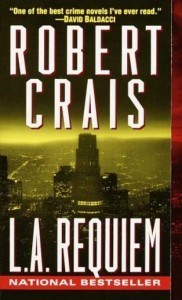Jon Say's Blog, page 2
April 1, 2011
Journaling – I Get It Now
I'm one of those people who always thought keeping a journal would be a great thing to do, but could never actually do it. I'd make plenty of attempts to start a journal – usually after some other compelling event had occurred like starting a new job, the calendar changing over to January 1, or even just receiving a nicely bound book filled with blank pages as a birthday gift. I would write my first entry, admiring the pristine pages and the striking contrast of my handwritten words across them, and vow to return the next day with further insights. Never did these efforts at recording my current history last more than one week.
Then in January 2008, my wife, daughter, and I relocated from Los Angeles to the Upper Midwest. I'd been born and raised there, had moved out to LA after meeting my wife on a vacation, and we wound up marrying and living blissfully in the land of endless summer for ten years. After our daughter was born, we decided to return to the Midwest to raise her around family and friends, a place where childhood lasts longer than in LA.
So no problem – I found a job, we packed up, and we moved. My last day at my former job was on a Wednesday, I flew out of LA the next day, and started my new job in Wisconsin the following Monday. And, after less than one week, I began to write a journal.
Shockingly, 18 months after I started this new job, it was eliminated as my employer blundered its way through the financial crisis. What was shocking wasn't that I got laid off; it was that eighteen months later, I was still keeping my journal.
I started a new job this week, 21 months after being shown the door at the last one. After I was laid off, I also stopped keeping the journal. Instead, I wrote several short stories, "Flesh Wound", and this blog.
In the two weeks after I accepted my current job offer but before my start date, I went back and re-read the journal I kept during my brief tenure at my old employer.
It was fascinating.
There were a lot of things going on in my life at that time. The relocation from a moderate climate to a winter climate in January; starting a new job after 9+ very successful years at the old one; helping my wife and 2 ½ year old daughter acclimate to the move, and missing very badly the city of Angels which I had come to love, and where so many good things had happened for me.
I drew two conclusions from re-reading my journal. One, I was amazed by how many things had happened during that time, and what I was thinking and feeling about them, that I'd forgotten. Things at work, sure, but also what it was like to have a 2 ½ year old. The lack of sleep, the diaper changes, the general relentlessness of the demands of raising a small child. Reading the journal brought those things back vividly, and I found myself appreciating my now-5 ¾ year old daughter all over again.
Second, life overall was very challenging for me at that time, and I was having a difficult time personally adjusting to all of the life changes that were happening at once. And that is why this particular effort at journaling, I think, continued for me for such a long time.
The main purpose the journal served for me was to provide a vent for the sometimes turbulent emotions of adapting to a difficult change in my life. And you know what? It helped.
I know that many therapists recommend that their patients keep journals for this very reason. Presumably, if one is seeing a therapist regularly, one is trying to deal with some issue in one's life that is bothering them enough to seek help. I understand that now in a way I didn't before. I also think that is why I stopped journaling when my job ended. I knew I was going to start pursuing something I'd always wanted to do – writing a novel – and I was optimistic and enthusiastic about doing it. The continuing source of irritation that had led to starting the journal in the first place – my new and ultimately toxic job – was gone.
Now that I've started my new job, I'm surprised at what a difference working for a good company with good people makes to one's overall satisfaction with life. Do I miss writing full-time? Only every day. But I got paid today, and I must say, that has some very, very attractive qualities. Will I keep writing? Sure. I'm writing right now. But I don't think I'll be writing a journal. This blog will be the closest I get. I still have my second novel to finish.
I hope you have a great week! Thanks for reading. -Jon
March 21, 2011
The Value of Deconstruction
 Think about something you have a passion for. It can be a hobby; if you're lucky it is what you do for a living. Once you realized you had a serious interest, how did you go about developing it? If your passion is something you do – biking, singing, painting, running, drawing, writing, etc. – there are many depths to which you can indulge it. One common way to become proficient at something is to study the practices, habits, and processes of those who have become accomplished at the discipline already.
Think about something you have a passion for. It can be a hobby; if you're lucky it is what you do for a living. Once you realized you had a serious interest, how did you go about developing it? If your passion is something you do – biking, singing, painting, running, drawing, writing, etc. – there are many depths to which you can indulge it. One common way to become proficient at something is to study the practices, habits, and processes of those who have become accomplished at the discipline already.
Painters may go to museums to study the work of masters to learn about brushwork, colors and blending, light, etc. Athletes can attend games to watch other athletes perform. Actors can attend theater or movies to watch those they admire. Writers have an almost limitless supply of work to study from the authors they enjoy, and in some cases, the authors who have inspired them to pick up the pen (or tap on the keyboard) in the first place.
There are many authors who have inspired me to want to write, but three in particular whose work I find myself coming back to again and again. After enjoying it one more time, I find myself thinking that this is the sort of work I would like to produce. These authors are Raymond Chandler, Robert B. Parker, and Robert Crais. I'm lucky enough to have met the latter a couple of times, and those meetings have confirmed that you can be a great person and write compelling fiction at the same time.
Any writer of fiction has one task they must accomplish on the way to completing a novel. How is the final manuscript structured? This is where the value of deconstruction comes in. What I mean by deconstruction is the analysis of a finished novel in terms of structure. How I do it is to go through the novel chapter by chapter and complete the following table:
Chapter / Day & Time / Characters / Action / Plot Notes
Once the table is complete for the entire novel, it is easy for me to go back and see how the author interwove multiple plot lines, when key characters were introduced, when their backstories were presented, and how plots unfold to dictate the pace of the book. Seeing how this is handled by authors I admire helps me when I sit down to accomplish those same tasks with my own stories. I complete this table for my own work in detail before I start writing the first page. Just by completing this table, I'm able to identify plot holes, character issues, and other problems to fix before the writing ever starts.
Every author has their own process. This is one step that works for me. If it works for you, fantastic! If you have a different process and that's what works for you, go to it and good luck! Produce great work, work that you can be proud of and that others will enjoy!
On a personal note, I have accepted a job offer with a terrific company. It's a traditional career position, and one that will take the majority of my time and energy. It will also provide financial sustenance for my family for the long-term. This means I'll be writing and blogging less, but by no means will I stop. I've always found a way to write. I always will.
Enjoy your week! Thanks for reading! -Jon
March 10, 2011
And Now, Back to Our Regularly Scheduled Programming
 After blogging three times per week for most of the last year, it's been nearly one month since my last blog post. The main reason is that I've been pursuing a traditional career position, and the interview preparation and attendance took up the time I had been spending at the writing desk. The good news is my career pursuit is nearing it's climax, and I should hear one way or the other on the position by the end of next week. So until then, I'm returning to writing mode.
After blogging three times per week for most of the last year, it's been nearly one month since my last blog post. The main reason is that I've been pursuing a traditional career position, and the interview preparation and attendance took up the time I had been spending at the writing desk. The good news is my career pursuit is nearing it's climax, and I should hear one way or the other on the position by the end of next week. So until then, I'm returning to writing mode.
Although I haven't been writing during the last month, I have been reading at my usual voracious pace. I've noticed something about character development and how it can dictate plot choices during that time, and I think it's going to make me a better writer.
Drama arises from conflict, which is a powerful story driver. The best plotting, I think, results from conflict that affects the main character as well as the other protagonists in the book, but in different ways. Let me give an example. Let's say Jill decides to hire Frank to find Mary, who has gone missing. Jill is Mary's older sister, and she's afraid that Mary, who is just 18, has been duped into running off to join a cult. Frank is a private investigator who hasn't met Jill or Mary before. Frank never knew his father, because his father didn't marry his mother because his father was Catholic and his mother was Protestant, and back in the 1950s, Catholics faced severe religious penalties for marrying outside of their faith. These penalties were too threatening to Frank's father, so he refused to marry Frank's mother. So, Frank was raised by his mother and aunt. Once Frank was old enough to understand that it was religious dogma that kept him from knowing his father, he developed both a deep disdain for organized religion and a deep sympathy for any innocent people who suffered as a result of it.
So when Jill tells Frank her story about Mary, Frank is moved and accepts the case. The point here is that Mary's running off with the cult affects both Jill and Frank, but for different reasons. Jill is agonizing over losing her little sister and any harm that may come to her, and Frank is motivated by wanting to liberate Jill from an oppressive religious dogma. This makes the story much more personal to Frank than if Jill were simply another client who walked through the door, and opens up all sorts of plotting possibilities to play on both Frank and Jill's emotional vulnerabilities.
I literally made up the previous two paragraphs as I was typing them, and there would have to be a lot of refining done to expand the plot of Frank, Jill, and Mary's story into a compelling novel. Objectively, though, I think good plotting and good character development are inextricably tied together by idealism. The main characters in the story must be idealists, hold strong beliefs according to those ideals, and then have those beliefs challenged early and often by the events in the story. The goal would be to have the shared circumstances of the story – in this case Mary's disappearance – threaten the ideals of the main characters in different ways, and the playing out of the plot allow the characters to question and develop their personal beliefs further as a result of events in the story. This creates an emotional and developmental arc in the story for the main characters, and is what compels the reader to come along for the ride.
Think about your favorite books or stories, the ones that kept you up way past your bedtime because you couldn't put them down. Were the main characters idealists? Did they hold strong beliefs? Did the plot of the story threaten those beliefs early and often? I'll bet they did. Setting up characters and plot lines this way is a great place to start when you're thinking about writing your next story.
If the traditional career choice works out, I'll be blogging less. If it doesn't, I'll be blogging more. Either way, read a great story today and see if the main character is an idealist whose beliefs are being challenged. It makes for great drama! Thanks for reading. -Jon
February 18, 2011
Sometimes a Quote is So Good…
 …you just have to write it down somewhere. I feel this way about an excerpt from "L.A. Requiem" by Robert Crais:
…you just have to write it down somewhere. I feel this way about an excerpt from "L.A. Requiem" by Robert Crais:
"There is great audacity in the willingness to change, more than a little optimism, and a serious dose of courage. It was the courage that I admired most, even though the results often made me cringe. After all, the people who come to Los Angeles are looking for change. Everyone else just stays home."
This quote comes early in the book, page 21 in the hardcover edition I'm reading. Crais is a hardcore Angeleno, and one of the reasons I love reading him is his books are filled with observations like the one above. I lived in Los Angeles for only 10 years, but I find many of his comments about life in LA to be spot-on, like the one above. Reading things like this always charge me up to go write something, and write something great. I can't wait for the next chance to sit down with "Rubbed Out".
Have a terrific weekend! I'll blog more next week. Thanks for reading! -Jon
February 15, 2011
Just Keep Going…
Another six days have passed since my last blog, and I am starting to feel guilty about the slowdown in the frequency of my writing sessions. There are reasons of course – there always are – in this case, they revolve around caring for sick family members and pursuing an especially intriguing employment opportunity. Valid reasons, no question. But they still pull me away from the writing desk.
Regardless of the validity of the reasons for writing less often, it is distressing to me to see the momentum built up by knocking out one third of my novel start to dwindle. However, you have to choose the actions that have the highest priority based on your values, and then be okay with that. Whenever I get into this sort of position I remember something that John Grisham wrote in his introduction to "A Time To Kill", his first novel. This introduction appeared in the paperback edition published three years after 'Kill' first came out, and after "The Firm" had made him a household name.
"I approached the writing of this book much like a hobby, an hour here and an hour there, with a somewhat disciplined effort to write at least one page a day. I never abandoned it. I remember one four-week period where nothing was written. I occasionally skipped a day, but for the most part I plowed ahead with blind diligence."
-Introduction to "A Time to Kill", by John Grisham, ©1989, Island Books edition published 1992
It wound up taking three years for Grisham to complete the manuscript for "A Time to Kill". I've read the book, and several more of his, and liked it a lot. Based on his sales history, I am not alone in this assessment. For my part, I take great comfort from the deliberate, drawn-out process Grisham went through in completing this work, and how by just keeping at it, he was able to launch a career that is now much better known as a novelist rather than a lawyer.
So the message is to just keep going. Do what you can, with what you have, where you are. And never give up.
Read something today that makes you want to write something of your own! Thanks for reading. -Jon
February 9, 2011
But I Really Liked That Chapter…
 Yes, I'm aware that nearly a week has passed since my last blog post. There are a few reasons for the delay. Blizzard cleanup, the flu bug hitting my wife and daughter, causing my daughter to miss two days of school last week, and the Packers playing and winning the Super Bowl on Sunday all contributed to just one writing session in the last six days.
Yes, I'm aware that nearly a week has passed since my last blog post. There are a few reasons for the delay. Blizzard cleanup, the flu bug hitting my wife and daughter, causing my daughter to miss two days of school last week, and the Packers playing and winning the Super Bowl on Sunday all contributed to just one writing session in the last six days.
But it was with great anticipation that I sat down on Monday morning, ready to write Chapter 17. This was the chapter I'd planned in my head while shoveling the mountains of snow deposited by the blizzard last week. I can't tell you how good it felt to actually write – the dialogue and action surprises that happen along the way, getting the action that needs to happen down on paper. About three hours after I began, I had a 2,500 word chapter that I really liked.
I got up and drove around and did a few errands, to get away from the material long enough to have somewhat fresh eyes when I sat down to transcribe it later that afternoon.
Then a funny thing happened.
As I was shopping for groceries, I realized quite clearly that what I had Faye do in the chapter I'd just written was something she would never do. It was out of character, literally. She'd needed to find a piece of information, but the way she went about it in the chapter, while completely believable and by no means illegal, violated some of her most firmly held beliefs.
So, what to do? The entire premise of the chapter was that Faye learned something valuable about a primary character during a session with a secondary character, in a very entertaining way. Do I keep the chapter in? Rewrite it? Scrap it?
I thought about it a long time, but I didn't really need to. I knew almost as soon as I realized there was a problem that the chapter had to go. Couldn't use it. To do so would be to violate the trust I'd built with the reader that Faye was who she was.
So, I never transcribed the chapter. Instead, I went back to the Chapter Sequence Summary and rearranged the chapters so that Faye finds out the information she needs about the primary character from the primary character himself, which is exactly what Faye would do.
So the lesson learned? Sometimes, even though you love what you wrote, it needs to end up on the cutting room floor. Maybe I'll get the chance to use a scene or two from the chapter later in this book, or in the next book, or in a short story. Maybe not. But the important thing is to preserve the integrity of the character. That's the only way this book has a chance of being great.
I may not be blogging as regularly, and if that happens I'll be sure to let you know why right here in this column. In the meantime, read something today that makes you laugh! It's a great way to keep warm. Thanks for reading. -Jon
February 3, 2011
Tomorrow the Sun Will Rise
 At the start of Tuesday morning, I looked at the next three days on the calendar and thought I'd have a good chance of getting some quality writing time. My daughter would be in school and there were no appointments on the calendar. We were supposed to get some snow on Tuesday and a big storm was forecast for Wednesday, but it's February in the Upper Midwest. Big storms aren't uncommon.
At the start of Tuesday morning, I looked at the next three days on the calendar and thought I'd have a good chance of getting some quality writing time. My daughter would be in school and there were no appointments on the calendar. We were supposed to get some snow on Tuesday and a big storm was forecast for Wednesday, but it's February in the Upper Midwest. Big storms aren't uncommon.
Tuesday morning went pretty much as planned. I dropped my daughter off at school, went to my coffee shop, and changed Chapter 12 as needed. It was snowing pretty hard all morning, so I drove home, ate lunch, and then did some Internet research in the afternoon. Then things got interesting.
Overnight nearly two feet of snow hurled by 50 mph winds drove snow drifts up to five feet high. School was cancelled on Wednesday, and the day was spent outdoors trying to clear doorways, driveways, and cars that were almost completely buried by snow. Wednesday night my daughter came down with a cold. Thursday morning it was worse, so she stayed home from school. The temperature had dropped down to single digits and the wind chill was -15. I drove to the grocery store around 10:30 in the morning, and when I came out my car would not start. The "intelligent key system" – the car has a push button start – went haywire and the electrical system turned on but wouldn't start the car, and then wouldn't turn off. I called AAA for a tow, and they informed me that due to the blizzard the day before, they were overwhelmed with calls and my tow truck would be there anytime between now and five hours from now. And, would I please stay with my vehicle. Nothing like sitting in a car when it's -15 wind chill for five hours. So I called my wife, who was also getting sick, and she and my sneezing and coughing daughter drove to where I was. Lo and behold her key for my car wound up resetting the system and starting the car. I immediately drove it to the dealer as she followed me, canceling my tow on the way, and dropped it off. We drove home and ate a late lunch, and it was now 2:00. I didn't do anything the rest of the afternoon but household chores and taking care of my sick girls.
So between Wednesday and Thursday, days I had planned to get between 8-10 hours of writing time, I spent exactly 0 minutes writing. These things happen.
The two days were not without progress on the writing front, however. I was able to get two things done that needed doing, while I was physically occupied with chores.
First, I emailed a cousin of mine who has experience in the military and asked him a question about the rank and uniform details for a character. Those sorts of details must be accurate or you lose credibility instantly with a reader who has the knowledge that you don't. He emailed me back with the exact information I needed, and now I can incorporate that into the story and know it is correct.
Second, while shoveling out my car I thought about the next chapter I'm going to write, specifically what one of the characters is going to be doing with Faye. This character has only a minor role in the story, but is a client of Faye's and is going to help her discover something important about Luc, who is a primary character. Faye will be sessioning with this client and I needed to decide what his background was as well as what he was going to be doing with Faye. I got both things thought through while moving a couple of feet of snow around by hand.
So even though I wasn't writing, I was thinking about writing and got something done. Like Teddy Roosevelt said, do what you can, where you are, with what you have. Good advice.
Finally, when things don't go as planned it is easy to get frustrated and feel like you've been stopped cold, losing all your momentum and requiring a solid fuel rocket booster to get going again, whenever 'again' turns out to be. It's useful to have something to focus on at times like that, because it is absolutely true that things are never as bad or as good as they seem.
My touchstone for times like that is to remember one of the final scenes from the movie "Cast Away", a personal favorite. After being wrecked on a lost island for four years, Tom Hanks' character returns to civilization through a random set of circumstances only to find (among other things) that the woman he was to marry has married someone else. He's describing to a friend how awful it was to lose her twice – when he was wrecked without hope of rescue on the island, and then again when he miraculously did return only to find her married to someone else. The lines I remember most went something like this:
"I was going to die on that island. But then the tide brought me a sail… I'm so sad I don't have Kelly… But I know now what I have to do. Keep breathing. Because tomorrow the sun will rise. Who knows what the tide will bring in?"
And that's just it, isn't it? You don't know. You make your plans, you try to execute them. And life has its way with you, the way Mother Nature shows who's boss by hurling two feet of snow at anything you may have had 'planned'. All you can do is deal with what is in front of you, do what you can, where you are, with what you have, and keep breathing. Because tomorrow the sun will rise. Who knows what the tide will bring in?
Have a good rest of your week. Read something today. Anything. Thanks for reading. -Jon
February 1, 2011
How Do You Keep This Stuff Straight?
 I missed my usual blog post yesterday due to some distractions in real life, and I'm getting to it late today because the blizzard warning we are currently under has led to early school closings and cancellations for tomorrow. As much as one would like to be able to just write 12 hours a day every day, that is simply not a realistic expectation. Nor is it necessary. Real life priorities take precedence at times, and that is fine. The writing will get done.
I missed my usual blog post yesterday due to some distractions in real life, and I'm getting to it late today because the blizzard warning we are currently under has led to early school closings and cancellations for tomorrow. As much as one would like to be able to just write 12 hours a day every day, that is simply not a realistic expectation. Nor is it necessary. Real life priorities take precedence at times, and that is fine. The writing will get done.
I had someone ask me recently how I kept all the plot elements and details of my story straight during the writing of the entire novel. Their question was based on the fact that it takes much longer to write a novel than to read one. Throw in the fact that this book has three separate story lines, all of which are happening independently of each other for much of the book, and it's easy to understand how continuity details can get lost over the months from when the book is started until the last word has been typed.
The way I keep everything straight is with a big ring binder in which I have organized several sections of documents.
The first section is the current manuscript text. It's fun to watch this section grow as the book gets written. It provides a nice sense of accomplishment, too.
The next section is a Chapter Sequence Summary table. This is a document that organizes the chapters of the book by plotline, so I know what must happen in each chapter to keep the story moving. I have columns in this table for Chapter #, Day/Time (of the action in the chapter – this is helpful for knowing how much time passes between events among the plotlines), and then one column for each major plotline. This is a great tool because it provides a sequential visual of not only how each plotline is developing during the course of the book, but the pacing between plotlines as the reader will see them. For example, I know that Chapter 14 will be about Faye and her new client and the current thing happening with them, Chapter 15 will be about Max and his search for Ae-Cha in Los Angeles, and Chapter 16 will take place three months prior and focus on Ae-Cha and her job interviews in Koreatown upon first arriving in this country.
This Chapter Sequence Summary is the first thing I consult when sitting down to write. Which chapter am I writing, and what is supposed to happen?
The section after this is a group of documents called "Themes/Plot Notes", where I keep all of the research material I've printed out and notes I've made on the different plot lines or characters. This is supporting material for all of the plot lines, and provides as much detail as I need to remember things about characters and plots.
The final section of supporting material I have is a Character Map, which shows all the primary characters and their relationship to each other in diagram form. This helps me keep track of who knows who and why, and just as importantly, who has not met during the book.
Organizing my material this way not only helps me keep on track with each day's writing, but when something in the plot changes (as it inevitably does – the plots never seem to be finalized until the book is finished!), it also makes it very easy to go back by chapter and see what needs to be changed to accommodate the new material.
For example, I decided this morning (in the shower, of course), that Luc (Faye's new client) needed to have a military background. This fact needed to be presented to the reader in a chapter that I had already written, which based on a quick check of the Chapter Sequence Summary turned out to be Chapter 14. I sat down with Chapter 14 with an idea of how to present this information to the reader, but after reading Chapter 14, decided the info needed to be brought out in the Faye and Luc chapter immediately preceding 14. Because there are three plot lines that alrernate throughout the book, though, that meant that Chapter 13 was not a chapter that dealt with Faye and Luc. Another check of the Chapter Sequence Summary showed that it was Chapter 12 that needed to be updated. I went to that chapter, read it through, added a few hundred words in the right place, and voila – the plot alteration was seamlessly worked into the story.
Being organized is important. It results in the cleanest first draft possible, and makes subsequent revisions easy to make. Every writer organizes themselves differently, but every writer organizes themselves. These tools work for me. Find whichever ones work for you and use them! They are your best friend in making sure your manuscript is always at its absolute best!
Try to stay warm and safe during this crazy winter storm! Cozy up to the fire and read something that takes place in a tropical location!  Thanks for reading. -Jon
Thanks for reading. -Jon
January 28, 2011
Time to Re-Sequence the Plot
 Now that I've finished 16 chapters, 23,000+ words, and countless gallons of coffee at my favorite coffee shop down the street, it is time to take a look at how the three story lines in Rubbed Out will have to play out among one another to lead to a great climax for the book, and then to break that "playing out" into reasonable chapters to tell the best story possible.
Now that I've finished 16 chapters, 23,000+ words, and countless gallons of coffee at my favorite coffee shop down the street, it is time to take a look at how the three story lines in Rubbed Out will have to play out among one another to lead to a great climax for the book, and then to break that "playing out" into reasonable chapters to tell the best story possible.
To do this, I decided to go back to my favorite coffee shop, take up two tables instead of my usual one, and use a chapter sequencing tactic that I'd seen before but never tried. I took a stack of Post-It notes, and used one of the tables I'd claimed to lay out the chapters, one per Post It note, in the sequence that made the most sense for telling the rest of the story. The advantage of this approach is that you can not only see all the remaining chapters of the story laid out in one visual, but you can move chapters around and re-sequence them simply by rearranging Post It notes.
I found this tactic worked very, very well. Within two hours, I'd sequenced the remaining chapters in the best order possible to tell the story. In addition, I'd had a couple of plot ideas occur to me that made the story stronger, and was able to easily drop those into place. I did wind up rearranging a few of the Post Its from one place to another, and when the chapters were in the final sequence, I numbered them.
The photo to the left shows my work area when I was finished. The Post Its are laid out in their final order (a different color of ink for each storyline to make it easy to see how all three alternated throughout the book), the bound journal I'm using to write the first draft by hand and make more extensive chapter notes than would fit on one Post It, and the ring binder I'm using to organize everything, including the manuscript so far.
Eventually, I will have a dedicated office in my home where this setup can remain permanently, and not have to be packed up every time I have a writing session. But until that day, this arrangement works very well.
Real life is going to assert itself here until next Tuesday, which ought to be my next chance to write. But when I sit down on that morning, I'll know exactly where to start and which chapter to work on. I think the time I spent today organizing my plot and chapters is going to result in finishing the book much more quickly, and the rewrites shorter.
Have a terrific weekend! January is ending, which in the Upper Midwest is a cause for joy. Read something this weekend that is set someplace that has palm trees! Thanks for reading. -Jon
January 26, 2011
Read Through at One Third Done – What Did I Learn?
 Since my daughter didn't have school on Monday, I knew this long weekend would throw off my writing schedule a bit. The timing was good, though, because now that I'm about 22,000 words into the novel, I wanted to step away from it briefly and then sit down and read the entire manuscript start to finish to see how it flowed. It has been about three weeks since I sat down to write page one, and if there were going to be any problems with continuity or flow, I wanted to catch them early.
Since my daughter didn't have school on Monday, I knew this long weekend would throw off my writing schedule a bit. The timing was good, though, because now that I'm about 22,000 words into the novel, I wanted to step away from it briefly and then sit down and read the entire manuscript start to finish to see how it flowed. It has been about three weeks since I sat down to write page one, and if there were going to be any problems with continuity or flow, I wanted to catch them early.
Today was the day for me to do my read through! I settled into my favorite spot at my favorite coffee shop, opened my ring binder to the first page, and started reading.
Two hours later I was finished and I had learned a couple of things. First, the flow and interplay of the three separate story lines was working well. I was feeling the anticipation of picking up each story line as it was presented, and sensing the appropriateness of the gap since I'd read it last, in other words, there wasn't too much or too little time between episodes in each story line. The continuity worked.
Second, the difference in mood and tone of the storylines played nicely off of each other. Ae-Cha's storyline is tense and dangerous. Max' storyline is active, humorous at times, and anticipation builds as his journey to find Ae-Cha progresses. Faye's storyline is engaging, unusual, and exciting, and is totally unlike and seemingly unrelated to Max and Ae-Cha's. Bringing all three together is going to be fun as a writer and hopefully rewarding as a reader.
Third, reading everything all the way through gave me a better sense of timing and flow, and I was able to correct sentence structures to contribute to that flow rather than distract from it. This polishing, done at each reading of the manuscript, just makes the work stronger and more presentable to agents when the time comes.
I will write another 20,000 words or so, and then do another reading like this. Getting this familiar with the story is absolutely critical to making the read effortless for whoever takes a look at the work. It shows you in the best possible light as a writer, and maximizes your chances of selling your work when it is complete.
This afternoon, I wrote Chapter 16. I'm going to transcribe that to the computer now, and hopefully be able to write Chapter 17 by Friday.
Have a terrific Wednesday! Read something today that shocks you! Thanks for reading. -Jon



